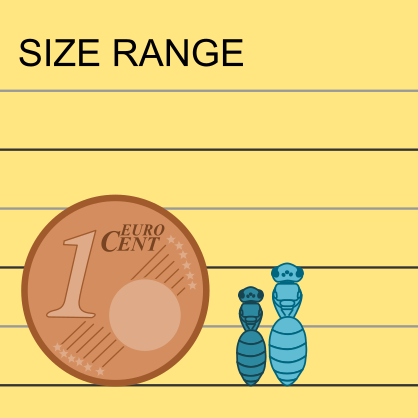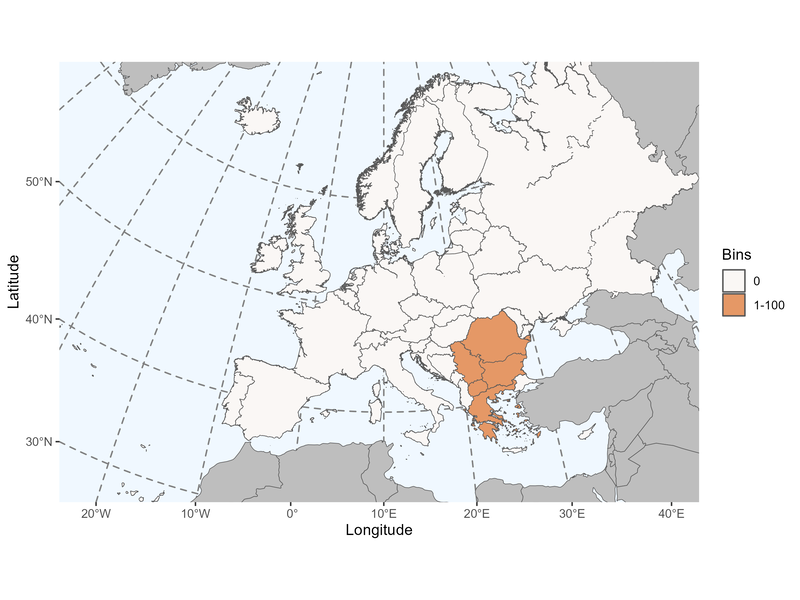Author: Tkalcu, 1984
|
Type species: Chelostoma schmiedeknechti Schletterer, 1889, by original designation.
|
Clade: Anthophila
Family: Megachilidae SubF: Megachilinae Tribe: Osmiini |
|
Distinctive traits
|
Pictures of distinctive traits.
|
Morphologically close genera and how to distinguish them
Chelostoma females have a fringe of long setae on the mandible internal margin. Chelostoma males have no preapical transverse carina on S6.
Heriades & Stenoheriades species do have a transverse carina between the vertical and horizontal areas of the T1.
Osmia, Hoplitis, Haetosmia & Protosmia have long hairs at the apex of the labrum. Scutellum often shorter than the ITD.
- Hofferia - Chelostoma
Chelostoma females have a fringe of long setae on the mandible internal margin. Chelostoma males have no preapical transverse carina on S6.
- Hofferia - Heriades & Stenoheriades
Heriades & Stenoheriades species do have a transverse carina between the vertical and horizontal areas of the T1.
- Hofferia - Osmia, Hoplitis, Haetosmia & Protosmia
Osmia, Hoplitis, Haetosmia & Protosmia have long hairs at the apex of the labrum. Scutellum often shorter than the ITD.
General comments on Hofferia species identification
There is only one species of Hofferia recorded in Europe.
There is only one species of Hofferia recorded in Europe.
Hofferia species found in Europe (Ghisbain et al. 2023):
Hofferia (Hofferia) schmiedeknechti (Schletterer, 1889)
Hofferia (Hofferia) schmiedeknechti (Schletterer, 1889)
Online resources:
Exotic Bee ID (World)
Palearctic Osmiine Bees (Palearctic)
WestPalBees (West Palearctic)
Exotic Bee ID (World)
Palearctic Osmiine Bees (Palearctic)
WestPalBees (West Palearctic)
Page contributors:
You noticed a mistake? You have a suggestion to improve this page?
Don't keep it to yourself, please contact us and become a contributor to IDmyBee!
- Adrien Perrard (Dec. 2023)
- Adrien Perrard (Dec. 2019)
You noticed a mistake? You have a suggestion to improve this page?
Don't keep it to yourself, please contact us and become a contributor to IDmyBee!
References used to write this page:
- Ghisbain, G., Rosa, P., Bogusch, P., Flaminio, S., Le Divelec, R., Dorchin, A., Kasparek, M., Kuhlmann, M., Litman, J., Mignot, M., Müller, A., Praz, C., Radchenko, V.G., Rasmont, P., Risch, S., Roberts, S.P.M., Smit, J., Wood, T.J., Michez, D. & Reverte, S. (2023). The new annotated checklist of the wild bees of Europe (Hymenoptera: Anthophila). Zootaxa, 5327(1), 1-147.
- Michener, C.D. 2007. The Bees of the World, 2nd Edition. The John Hopkins University Press, Baltimore.
- Michez D., Rasmont P., Terzo, M., Vereecken, N. 2019. Abeilles d'Europes. Hymenoptères d'Europes, Volume 1. N.A.P. Editions.
- Nieto, A., Roberts, S. P., Kemp, J., Rasmont, P., Kuhlmann, M., García Criado, M., ... & Michez, D. 2014. European red list of bees. Luxembourg: Publication Office of the European Union, 98.
- Rasmont, P., Devalez, Jelle, Pauly, A., Michez, D. & Radchenko, V.G. 2017. Addition to the checklist of IUCN European wild bees (Hymenoptera: Apoidea). Annales de la Société entomologique de France 53: 17-32.



